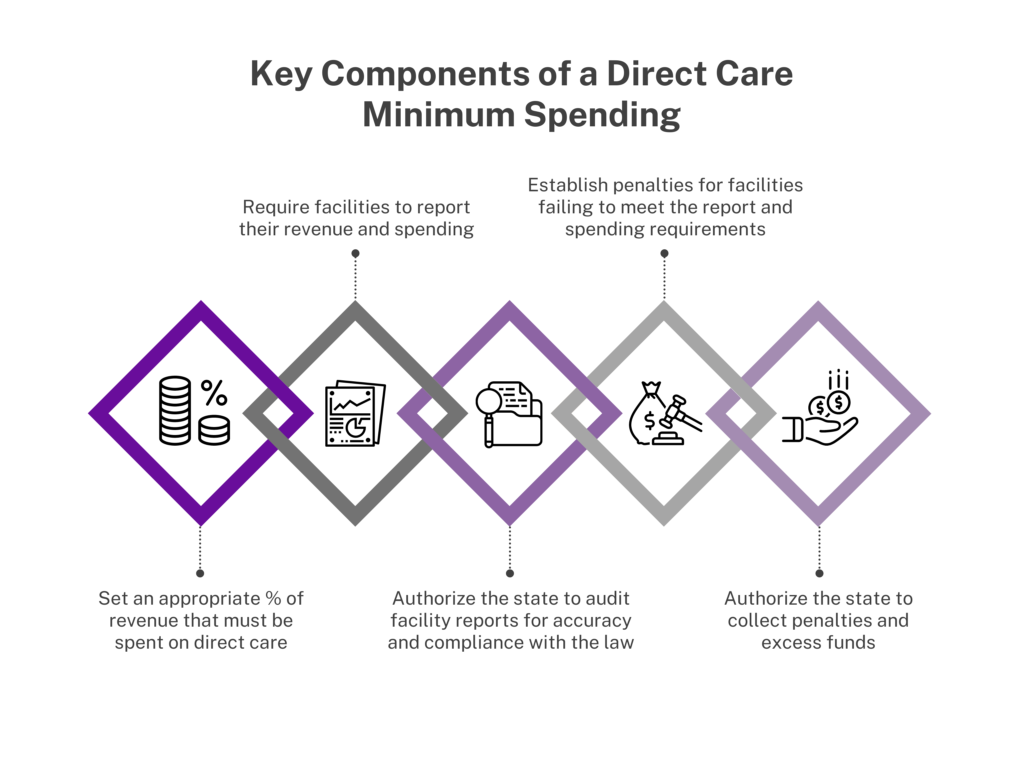Until recently, nursing homes have not been required to spend a set minimum percentage of the funds they receive on the care of their residents, nor have the public or policymakers had an effective tool to require accountability for these expenditures. We urgently need laws requiring nursing homes to spend an appropriate amount of revenue on the direct care of their residents. These laws will improve safety, quality of care, and quality of life for the nation’s nursing home residents and will provide a critical tool for sorely needed transparency and accountability.
Click here to download the full policy brief or access sections in the toggle boxes below.
Note: LTCCC’s policy brief on New York’s Direct Care Minimum Spending Ratio is available at https://nursinghome411.org/ny-minimum-spending-ratio/.

